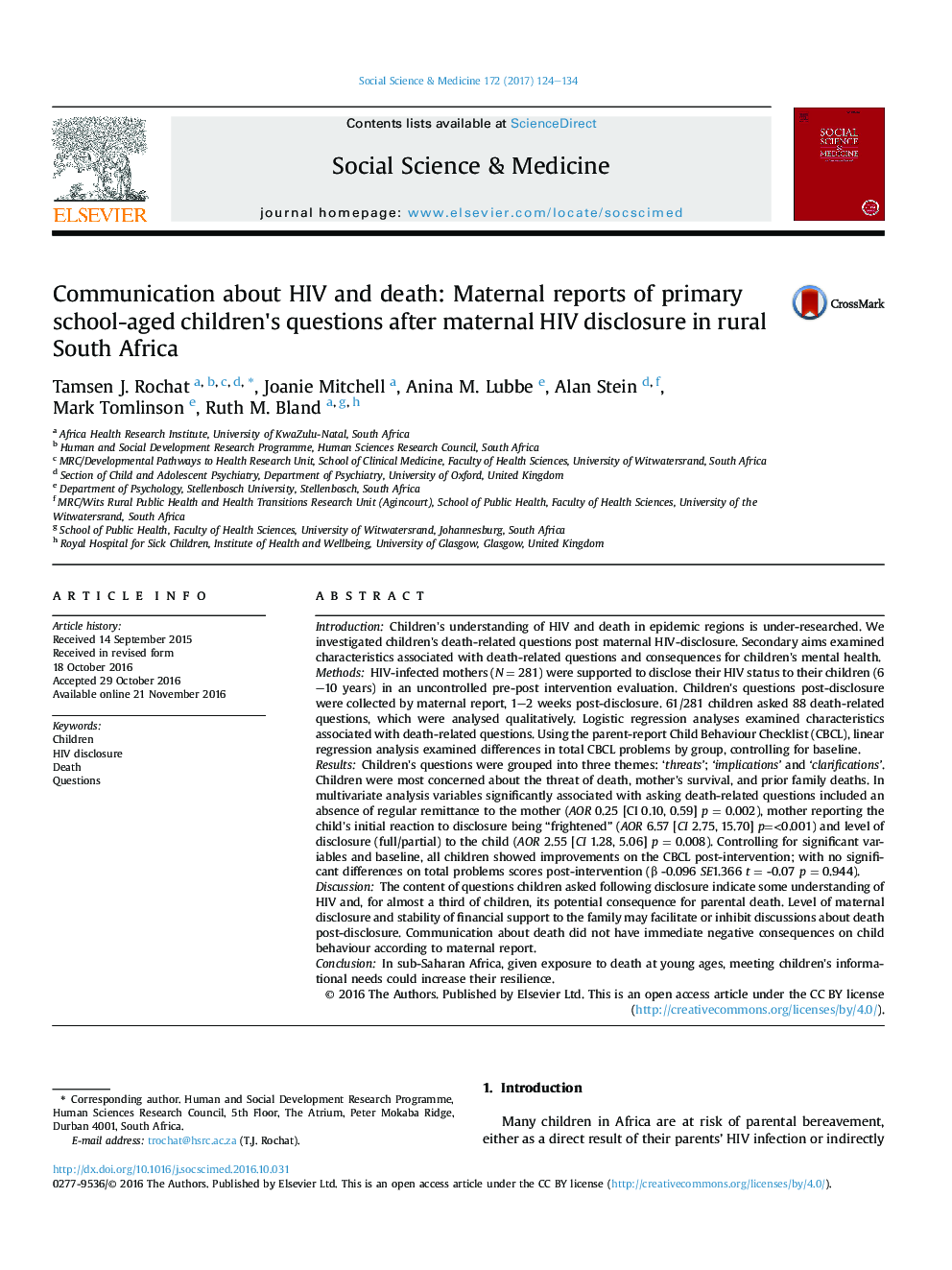| کد مقاله | کد نشریه | سال انتشار | مقاله انگلیسی | نسخه تمام متن |
|---|---|---|---|---|
| 5046795 | 1475997 | 2017 | 11 صفحه PDF | دانلود رایگان |
- Children living in HIV epidemic communities are exposed to death at young ages.
- Primary-school aged children understand information on HIV, illness and death.
- Intervention training successfully prepared mothers to communicate about death.
- Communication about death did not increase children's mental health problems.
- HIV disclosure creates opportunities to communicate with and reassure children.
IntroductionChildren's understanding of HIV and death in epidemic regions is under-researched. We investigated children's death-related questions post maternal HIV-disclosure. Secondary aims examined characteristics associated with death-related questions and consequences for children's mental health.MethodsHIV-infected mothers (N = 281) were supported to disclose their HIV status to their children (6-10 years) in an uncontrolled pre-post intervention evaluation. Children's questions post-disclosure were collected by maternal report, 1-2 weeks post-disclosure. 61/281 children asked 88 death-related questions, which were analysed qualitatively. Logistic regression analyses examined characteristics associated with death-related questions. Using the parent-report Child Behaviour Checklist (CBCL), linear regression analysis examined differences in total CBCL problems by group, controlling for baseline.ResultsChildren's questions were grouped into three themes: 'threats'; 'implications' and 'clarifications'. Children were most concerned about the threat of death, mother's survival, and prior family deaths. In multivariate analysis variables significantly associated with asking death-related questions included an absence of regular remittance to the mother (AOR 0.25 [CI 0.10, 0.59] p = 0.002), mother reporting the child's initial reaction to disclosure being “frightened” (AOR 6.57 [CI 2.75, 15.70] p=<0.001) and level of disclosure (full/partial) to the child (AOR 2.55 [CI 1.28, 5.06] p = 0.008). Controlling for significant variables and baseline, all children showed improvements on the CBCL post-intervention; with no significant differences on total problems scores post-intervention (β -0.096 SE1.366 t = -0.07 p = 0.944).DiscussionThe content of questions children asked following disclosure indicate some understanding of HIV and, for almost a third of children, its potential consequence for parental death. Level of maternal disclosure and stability of financial support to the family may facilitate or inhibit discussions about death post-disclosure. Communication about death did not have immediate negative consequences on child behaviour according to maternal report.ConclusionIn sub-Saharan Africa, given exposure to death at young ages, meeting children's informational needs could increase their resilience.
Journal: Social Science & Medicine - Volume 172, January 2017, Pages 124-134
